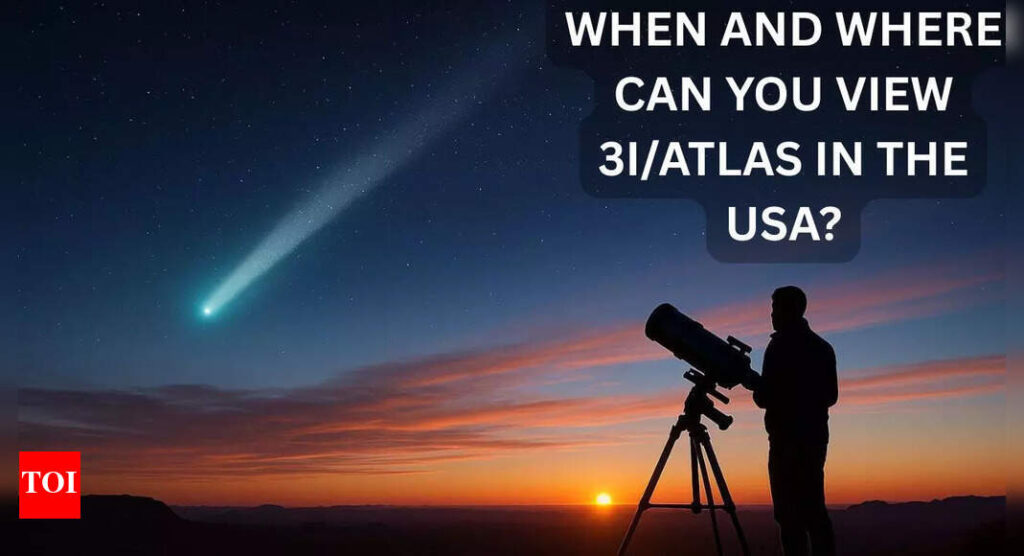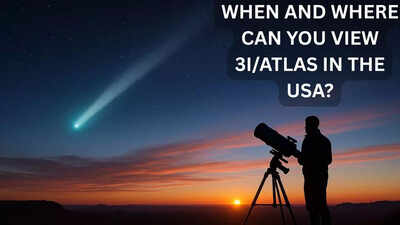Viewing 3I/ATLAS in the USA: When and how you can get a glimpse of a comet from another star system |

It’s been years since an object from another star system came calling. Now, the cosmos is sending us another mysterious visitor — 3I/ATLAS, only the third confirmed interstellar object after ʻOumuamua (2017) and Borisov (2019). But if you’re hoping for a dazzling streak across the sky, temper your expectations. Seeing it will take patience, darkness, and a serious telescope.
What is 3I/ATLAS?
Discovered in early July 2025 by the Asteroid Terrestrial-impact Last Alert System (ATLAS) in Hawaii, 3I/ATLAS is moving on a hyperbolic path — meaning it’s not gravitationally bound to our Sun. It entered the solar system from deep interstellar space and will leave just as swiftly, never to return.It will swing around the Sun (its perihelion) on 30 October 2025, coming within 1.4 astronomical units (AU), and pass its closest point to Earth — 1.8 AU or roughly 269 million km — on 19 December 2025.
When can you see it?
3I/ATLAS is faint — around magnitude 12 to 18, far beyond the reach of unaided eyes or binoculars. But for amateur astronomers with access to decent equipment, here’s the window:Best viewing period: Early November to mid-December 2025.
- Why: The object will emerge from behind the Sun after its late-October conjunction, making its reappearance in the pre-dawn eastern sky.
- Timing: Look about 90 minutes before sunrise, when the sky is still dark but the horizon is clear.
- Equipment: A large amateur telescope (10-inch or bigger) under dark, rural skies will be necessary.
Even then, 3I/ATLAS will appear as a dim, slow-moving speck — no glowing tail, no cometary fanfare, just the faint whisper of something not from our solar system.
Where in the US will you have the best chance?
Visibility will depend on latitude, horizon clarity, and light pollution. The southern and mid-latitude states get the best geometry as the object rises slightly higher in the morning sky.For most of the US, the comet will rise about 2 hours before sunrise and set quickly as the Sun climbs — meaning you’ll need to plan carefully. Observatories in the American Southwest and Hawaii are expected to get the clearest professional-grade images.
Why it matters
Every interstellar object offers a rare opportunity to study material from beyond our solar system — fragments of other planetary systems that formed billions of years ago. Spectroscopic observations from NASA and ESA telescopes will help determine its composition and speed, giving clues about how common such visitors might be.But for stargazers, it’s not just about the science. Watching 3I/ATLAS — even through a telescope — is like catching a glimpse of a cosmic traveller between suns. A faint, fleeting reminder that our solar system is just one stop in an infinite interstellar highway.In short:
- Visible early mornings, November – December 2025
- Best states: Arizona, New Mexico, Texas, Southern California, Florida
- Needs a large telescope and dark skies
- Faint, no visible tail — just a tiny speck with an extraordinary origin





